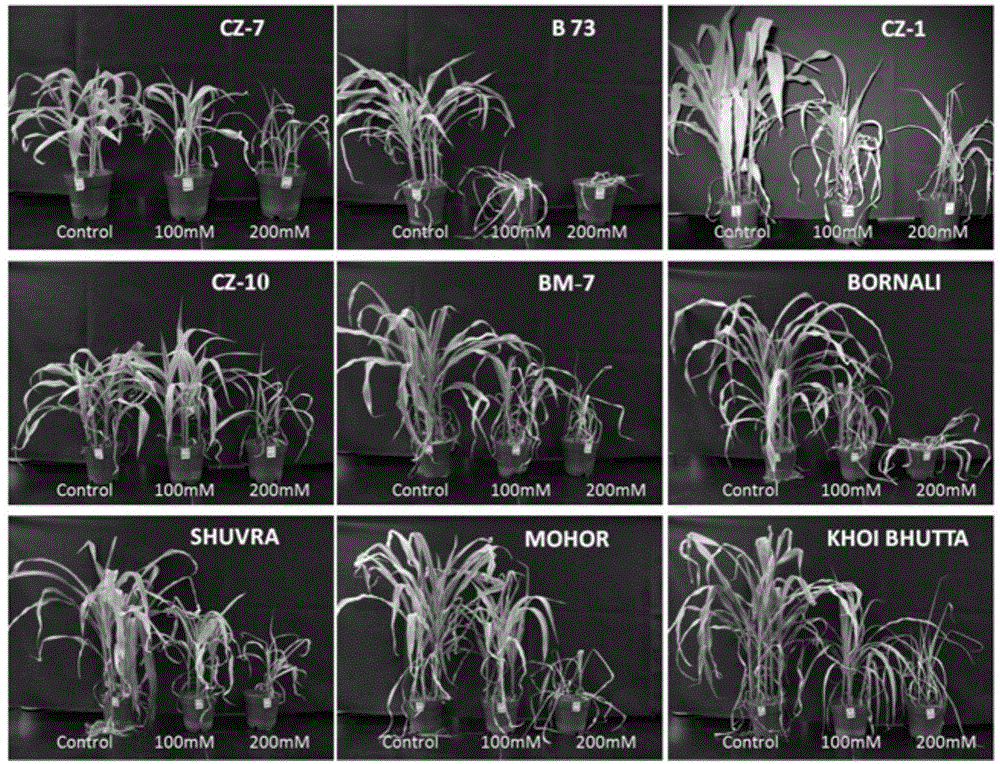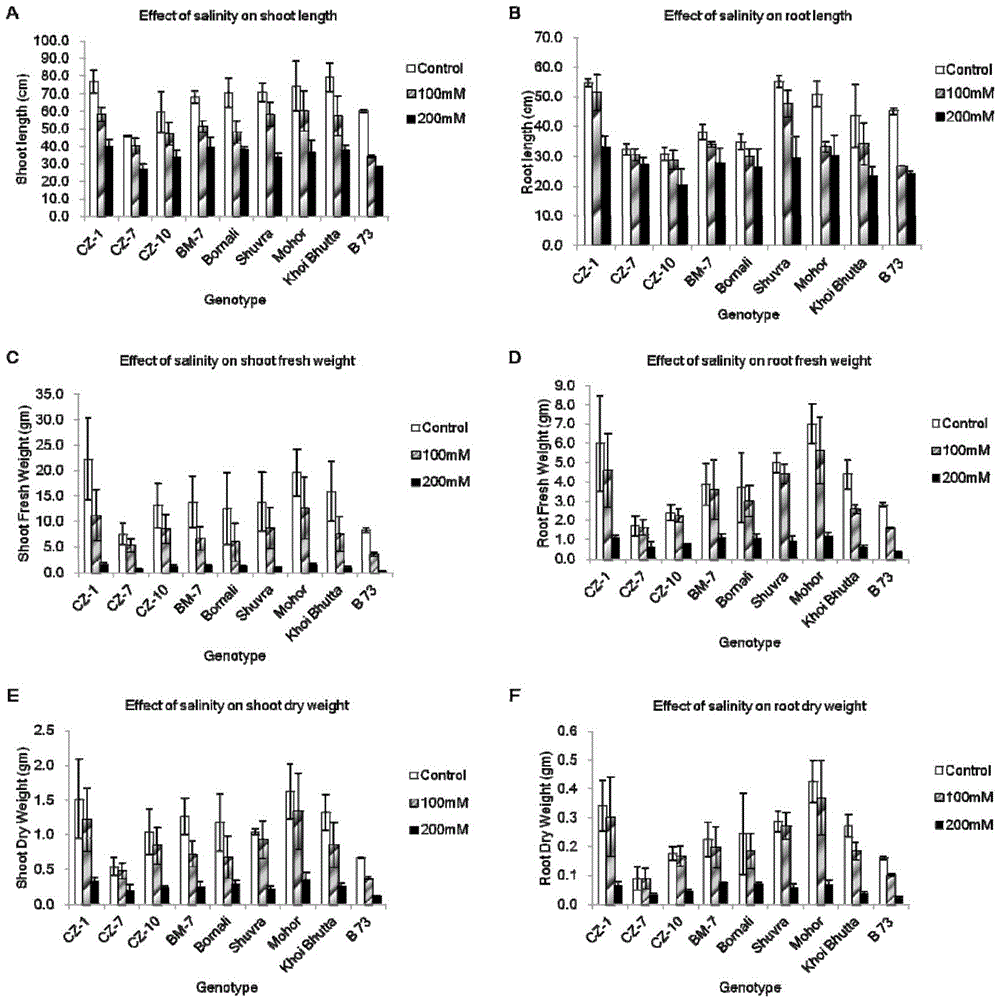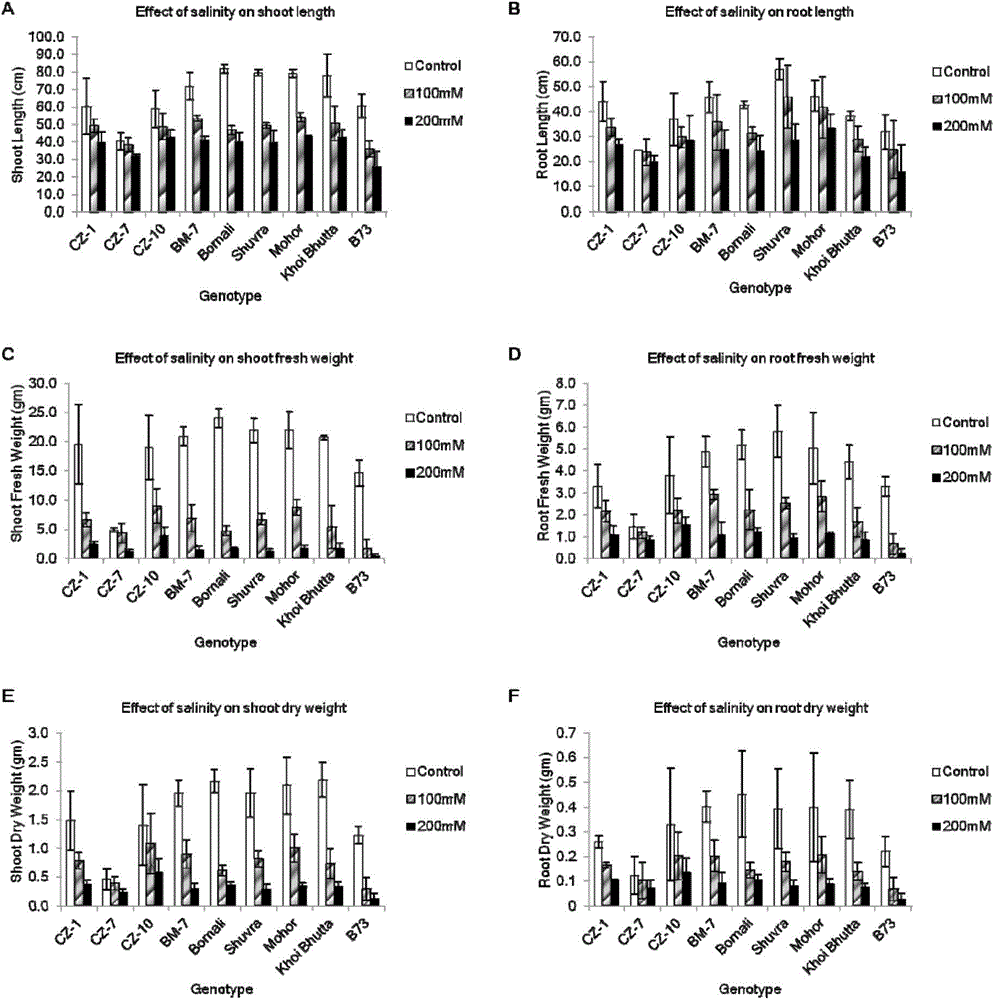Maize salt tolerance identification method
An identification method and salt tolerance technology, applied in the field of plant physiology, can solve the problems of plant growth retardation, leaf wilting, leaf top whitening, etc., and achieve the effect of avoiding human operation errors, long identification period and short experiment period
- Summary
- Abstract
- Description
- Claims
- Application Information
AI Technical Summary
Problems solved by technology
Method used
Image
Examples
Embodiment 1
[0025] The cultivation of embodiment 1 corn seedling and salt stress treatment
[0026] 1. Material preparation: Collect seeds of 9 corn inbred lines from different corn materials, including CZ-1, CZ-7, CZ-10, BM-7, Bornali, Shuvra, Mohor, and Khoi Bhutta from Bangladesh Agricultural Research Institute, B73 provided by the Institute of Crop Science, Chinese Academy of Agricultural Sciences.
[0027] 2. Germination of seedlings: Rinse the above seeds with deionized water 3 times, place them on germination paper, and germinate them in an incubator at 28°C for 48 hours. Each material has 3 treatments, and each treatment includes 3 repetitions. Repeat planting 4 plants.
[0028]3. Cultivation conditions: Transplant the seeds that germinate uniformly into small flowerpots filled with vermiculite. After all the seedlings are sown, place the flowerpots in the incubator. The cultivation conditions are: 25°C for 16 hours, light intensity 450 μmolm-2s-1, 23 ° C dark for 8 hours, relat...
Embodiment 2
[0030] Embodiment 2 above-ground part fresh weight and dry weight weighing
[0031] 1. Weighing the fresh weight of the above-ground part: after about 4 weeks of stress treatment of the seedlings, the seedlings of some materials show wilting phenotype, take the seedlings out of the flower pot, cut off the above-ground part along the root, and quickly weigh the weight, which is the above-ground part Fresh weight.
[0032] 2. Weighing the fresh weight of the above-ground part: place the fresh-weighted seedlings in a paper bag, place them in an oven at 85°C, and dry them continuously for 48 hours, then weigh the dry weight, that is, the dry weight of the above-ground parts ( figure 2 and image 3 ).
Embodiment 3
[0033] Na in the sample of Example 3 + 、K + Determination of the ion content of
[0034] 1. Sample weighing: weigh the dried sample on a balance and put it into a volumetric flask.
[0035] 2. Sample digestion: add 10 times the volume of the sample to the above sample into the digestion solution (HNO 3 :HClO 4= 4:1, volume ratio), pre-digested for 12 hours, put the beaker containing the digest in a horse-boiling furnace, and heated at 175°C for 2-3 hours until the solution became clear and transparent.
[0036] 3. Sample dilution: add deionized water to the digestion solution, transfer it to a test tube and dilute to 25mL, absorb 1mL and dilute to 15mL with deionized water after mixing, then take 1mL and dilute to 10mL after mixing.
[0037] 4. Na + 、K + Ion determination: place the diluted solution in an atomic absorption spectrometer and measure Na + 、K + Ion content, the digestion solution without sample was used as the blank control.
[0038] Na + 、K + Ion conte...
PUM
 Login to View More
Login to View More Abstract
Description
Claims
Application Information
 Login to View More
Login to View More - R&D
- Intellectual Property
- Life Sciences
- Materials
- Tech Scout
- Unparalleled Data Quality
- Higher Quality Content
- 60% Fewer Hallucinations
Browse by: Latest US Patents, China's latest patents, Technical Efficacy Thesaurus, Application Domain, Technology Topic, Popular Technical Reports.
© 2025 PatSnap. All rights reserved.Legal|Privacy policy|Modern Slavery Act Transparency Statement|Sitemap|About US| Contact US: help@patsnap.com



